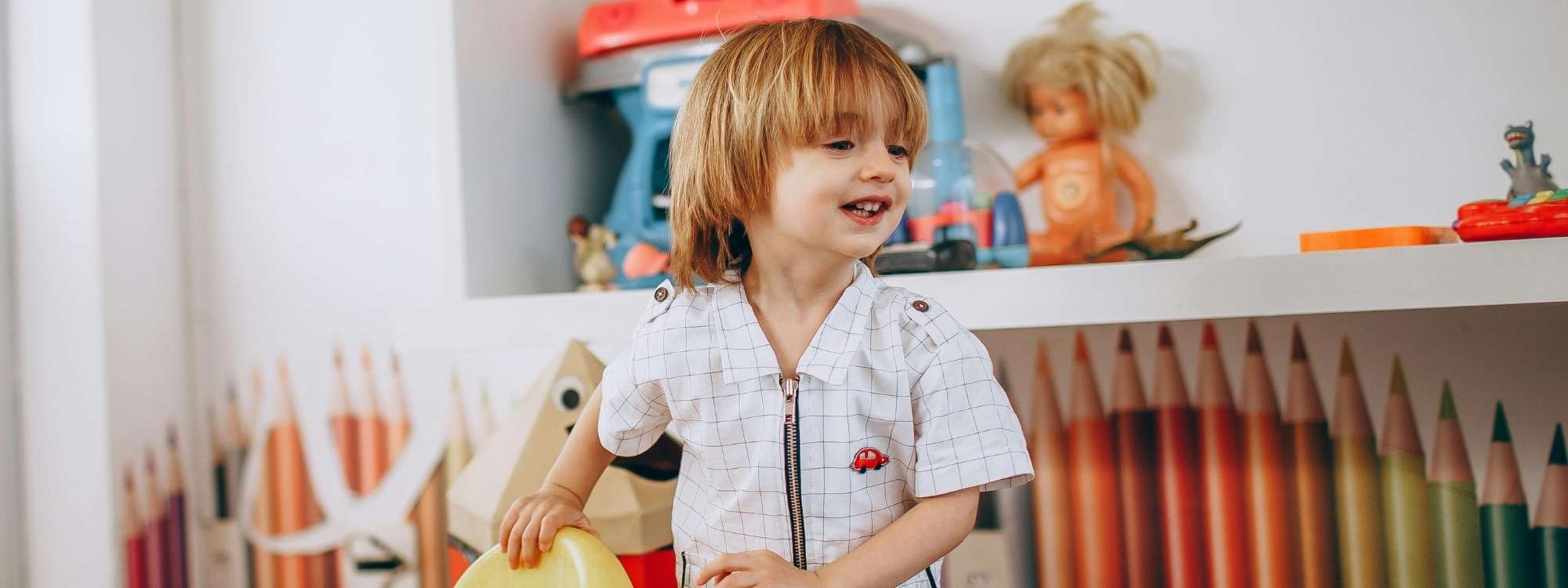How Much Does ABA Therapy Cost Per Hour? Explained
Applied Behavior Analysis (ABA) therapy is a widely recognized, evidence-based approach that helps children with Autism Spectrum Disorder (ASD) improve communication, behavior, and daily living skills. One of the most common concerns for families exploring this option is understanding the ABA therapy cost per hour. Rates can vary significantly based on your child’s needs, the provider’s qualifications, therapy setting, and whether funding options such as funded ABA therapy can help cover the expense.
In this guide, we break down hourly costs, monthly and annual estimates, and the key factors that influence pricing. You’ll also learn about insurance coverage and available financial aid options to help you plan confidently for your child’s care.
What Is ABA Therapy?
ABA therapy is a scientific approach to understanding behavior and learning. It helps children with autism improve communication, social, and daily living skills while reducing problematic behaviors. ABA is highly individualized, meaning therapy plans are tailored to each child’s needs and goals.
Therapy sessions can be conducted in various settings at home, in clinics, schools, or the community, and often involve collaboration with Board Certified Behavior Analysts (BCBAs) and Registered Behavior Technicians (RBTs). Because of its intensity and customization, ABA therapy is considered the gold standard for autism treatment.
Factors Affecting ABA Therapy Cost
The cost of ABA therapy per hour is influenced by several important factors. Understanding these variables can help families estimate expenses and budget more accurately.
Therapist Credentials
Board Certified Behavior Analysts (BCBAs) supervise and create individualized treatment plans. Since board-certified aba therapists (BCBAs) have advanced credentials, their hourly rates are typically higher than RBTs. A BCBA might charge between $150 and $250 per hour, while an RBT, under supervision, may cost between $50 and $100 per hour.
Location & Service Setting
Therapy delivered in major cities or high-cost-of-living areas tends to be more expensive. In-home sessions may also cost more than center-based services due to travel and logistical needs.
Intensity & Frequency
ABA therapy is often recommended for 10 to 40 hours per week, depending on the child’s needs. More hours mean higher overall costs. Children in early intensive behavioral intervention (EIBI) programs may require more frequent sessions.
Insurance Coverage & Benefits
Many insurance companies now cover ABA therapy, but the level of coverage varies. Co-pays, deductibles, and out-of-pocket maximums can all impact what families ultimately pay, depending on how much insurance covers the therapy. Medicaid, private insurance plans, and local school districts may offer partial or full coverage.
ABA Therapy Cost Per Hour
ABA therapy costs vary widely, but national averages provide a helpful benchmark:
| Provider Type | Estimated Hourly Cost |
|---|---|
| Board Certified Behavior Analyst (BCBA) | $120 – $250 |
| Registered Behavior Technician (RBT) | $50 – $100 |
Many therapy plans involve a mix of supervised and direct care hours, with BCBAs overseeing programs and RBTs delivering day-to-day sessions.
Monthly and Annual Costs
The average monthly cost for ABA therapy ranges from $4,800 to $16,000, depending on:
- Hours per week (10, 20, or 40)
- Provider qualifications
- Insurance coverage and co-payments
Annual costs can range from $60,000 to over $200,000 for high-intensity therapy programs. These figures can place a significant financial burden on families without adequate coverage or support.
Insurance Coverage for ABA Therapy
Many insurance companies cover ABA therapy for children with autism, thanks to state-level mandates and federal requirements under the Affordable Care Act. However, the level of coverage can vary significantly based on:
- The insurance provider
- Your plan type (e.g., HMO vs PPO)
- Whether your child has a formal autism diagnosis
- Age limits or treatment hour caps imposed by the plan
To maximize benefits, families should:
- Call their insurance provider to confirm ABA coverage
- Request details on co-pays, deductibles, and prior authorizations
- Ask if specific providers are in-network
Additionally, some school districts may incorporate ABA into a child’s Individualized Education Plan (IEP), providing therapy during school hours at no extra cost.
How to Pay for ABA Therapy
For families concerned about affordability, there are several ways to offset the cost of ABA therapy, including exploring ABA financial assistance options :
Financial Assistance Options
Nonprofit organizations, local health departments, and autism-focused foundations often offer scholarships, grants, or direct financial support. Examples include:
- United Healthcare Children’s Foundation
- Autism Speaks Family Services Grants
- Local and state-funded autism programs
Medicaid waivers are also available in many states to help families cover ABA therapy costs, even if their income is above typical Medicaid thresholds.
Private Pay & Sliding Scales
Some ABA therapy providers offer sliding-scale rates or payment plans based on household income. Discussing payment options during the intake process can open up more affordable paths to care.
Employer Benefits
Flexible Spending Accounts (FSAs), Health Savings Accounts (HSAs), or employer-sponsored assistance programs may be used to pay for ABA therapy with pre-tax dollars.
Evaluating the Cost: Is ABA Therapy Worth It?
While the full cost of ABA therapy may seem overwhelming, families should also consider the long-term benefits. Studies have shown that early, intensive ABA intervention leads to significant improvements in:
- Communication and language skills
- Social interaction
- Adaptive behavior and independence
According to the Autism Parenting Magazine, the earlier a child begins ABA therapy, the more likely they are to achieve positive developmental outcomes that reduce reliance on long-term support.
In that context, many families view ABA therapy as a long-term investment in their child’s future.
Comparing In-Home vs. Center-Based ABA Therapy Costs
One of the most important factors influencing ABA therapy cost per hour is the setting in which services are delivered. While both in-home and center-based therapy offer evidence-based care, their pricing structures and logistics differ.
In-home ABA therapy is often more convenient for families and tailored to real-life environments. However, it may come with higher hourly rates due to travel time, staffing logistics, and personalized attention. Center-based ABA therapy, on the other hand, typically provides access to more resources, structured settings, and peer interaction. It can sometimes be more cost-effective per hour because multiple children may be served in one location with shared supervision.
When comparing the two, families should consider:
- Hourly rate differences
- Travel and scheduling flexibility
- Supervision models (e.g., more frequent BCBA presence at centers)
- Whether insurance providers cover both settings equally
Ultimately, the right choice depends on your child’s goals, comfort, and the specific offerings of your ABA provider.
How Many Hours of ABA Therapy Does My Child Need?
The overall cost of ABA therapy is directly tied to the number of therapy hours your child receives each week. But how do you know how many hours are appropriate?
Most ABA programs fall into one of two categories:
- Focused ABA therapy (10–20 hours/week): Targets specific skills or behaviors. Ideal for older children or those with milder needs.
- Comprehensive ABA therapy (25–40 hours/week): Recommended for younger children or those requiring support across multiple developmental domains.
The number of hours depends on:
- Your child’s age and diagnosis
- Skill deficits and behavioral goals
- Clinical assessment by a Board Certified Behavior Analyst (BCBA)
While more hours mean a higher average annual cost, research shows that early, intensive intervention often leads to better long-term outcomes. A thorough intake process will help determine the most effective and sustainable plan, balancing your child’s needs with your family’s capacity and resources.
What’s Included in the Hourly Rate for ABA Therapy?
When evaluating the ABA therapy cost per hour, it’s important to understand what that fee covers. Unlike a flat fee for a single service, ABA therapy includes multiple layers of care, coordination, and supervision often beyond what occurs during the face-to-face session.
Typical hourly rates may include:
- Time spent by a BCBA designing and updating your child’s individualized treatment plan
- Direct therapy sessions with a Registered Behavior Technician (RBT)
- Supervision hours, data analysis, and behavior tracking
- Parent meetings or training sessions
- Coordination with teachers, schools, and other providers
Some providers bundle these into one rate, while others itemize costs based on services rendered. Clarifying what’s included in your provider’s hourly rate helps you better compare options and ensures there are no unexpected expenses later.
How School Districts and IEPs Can Offset ABA Costs
In some cases, families can reduce out-of-pocket expenses by accessing school-funded ABA therapy through their child’s Individualized Education Plan (IEP). Public school districts are legally required to provide appropriate educational supports for students with disabilities, including behavioral interventions when needed.
If your child qualifies for special education services:
- You may request a Functional Behavior Assessment (FBA) and a behavior intervention plan
- ABA strategies can be implemented during school hours, at no cost to the family
- Some districts may even contract with ABA therapists or allow collaboration with your private provider
While school-based services may not replace a full clinical ABA program, they can significantly reduce the number of private therapy hours needed, leading to major savings over time. If you’re unsure how to initiate this process, consult your child’s IEP team or an educational advocate.
Conclusion
The cost of ABA therapy per hour can vary widely depending on therapist credentials, session intensity, insurance coverage, and location. For families navigating autism care, understanding the average ABA therapy cost and exploring financial assistance options can help make therapy more accessible and sustainable. With the right support, ABA therapy can be a life-changing investment that helps children with autism reach their full potential.
Worried about the cost of ABA therapy for your child with autism? At Champions ABA, we’re here to help you navigate the financial side of care with clarity and support. Our team offers personalized guidance on insurance coverage, funding options, and flexible payment plans so your child can get the life-changing support they need without added stress. Call (877) 242-1744 or visit our website to learn how we can make ABA therapy more accessible for your family.
FAQs
How much is ABA therapy in Connecticut, Colorado, and Massachusetts?
ABA therapy in these states typically costs $120–$250 per hour, depending on the provider, session type, and location. Many families use insurance, Medicaid, or state-funded programs to help cover costs, and some providers offer package rates or financial assistance.
What is the rate in ABA therapy?
ABA therapy typically ranges from $120 to $250 per hour for services led by a BCBA. RBT-supervised sessions may cost $50 to $100 per hour. Total costs depend on how many hours per week a child receives therapy and whether insurance helps cover the child’s therapy costs.
How many months is ABA therapy?
The duration of ABA therapy varies based on each child’s needs. Many children begin therapy in early childhood and continue for several months to years. A typical program may last 1–2 years, with some children needing long-term support tailored to their developmental goals.
Is ABA the best for autism?
ABA therapy is considered one of the most evidence-based and effective treatments for autism. It focuses on improving behavior, communication, and life skills through structured, goal-oriented sessions. While not every child responds the same way, many families report significant progress with ABA.



